To be Digital Savvy in the ASO world
With over millions of apps on the app stores (both Google and iOS), it is usually hard to determine if your App will be able to stand out among others. This is where App Store Optimization (ASO) comes into play.
However, the problem lies in the fact that over time almost everyone has adept at the basics of ASO, hence the strategies which used to work before, now are more competitive as practiced by everyone.
I will just assume that you all know the basics of the ASO, the keywords selection, the importance of the title, subtitle, search volume, difficulty, opportunity score, and every other basic thing. So, for today, I will dive into some secret strategies that will make you the savvy ASO of the app store optimization world.
In this article, you will know
- The technique of cross-localization
- In-App purchase promotions
- In-App Events
- Ratings
- Your Publishing Account Names
- Keywords Placements
- Cross-Localization
Now we all know how important localization is, be it on Google play or App store, we put keywords with more search volume and opportunity in their respective locales.
Both Google Play and App Store index metadata across all localizations. Because of this, there are times when your app can rank on keywords in different languages. For sure, it can be weird and annoying, but it is on you if you want to also be useful. For instance, if you are promoting your app in a single country. To optimize the metadata of other localizations, you can use relevant keywords in the desired language in different locales. This will boost indexing and ranking in your target country.
Let’s take an example of a game that you are planning to launch in the USA on the App store. Now if you put different keywords and fully localize them in different languages, there is a chance that the algorithm might rank your app on Chinese or Arabic keywords in the USA, which of course won’t be good right?
Then why not, utilize this opportunity instead of getting mad at the algorithm and add keywords targeted for the USA but in Chinese, Arabic or Spanish (Mexico) locales.

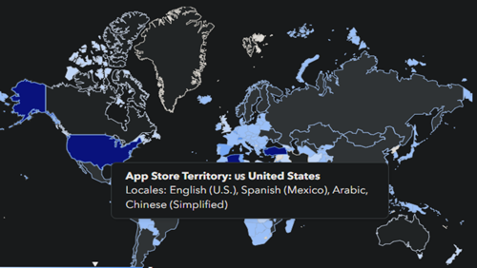
However, cross-localization is a very complex process and can only be done successfully after multiple experiments and only if you are targeting a specific location. Also, keyword combinations are to be restricted to single locales.
- In-App Purchase Promotions
App store allows you to promote your In-App purchases. For instance, if your app has a promoted In-App purchase, it is likely to take the whole page to itself. If you are on the first, second or even third spot, you are certain to push your competitors down.
Plus, if you are promoting a special character, or anything special in the game, there is a big chance that the user might download your app just for that thing you showcased along with the screenshots and icon.
It might not give a sudden boost to your app, but apps have been seeing getting better rankings by promoting stuff and utilizing the opportunities App Store gives to them.


- In-App events
The App Store offers you to go out there and show the visitors what your game is offering through the In-App events. The best part is that it doesn’t even have to be a live event, it can also be just a major update, a challenge, a competition or any feature that you think is different from others or something that might interest the viewers.
Promoting your game’s different features is something everyone should be doing. It makes the game look active and user-caring and the plus point is that the app store usually saves the higher rankings for the apps which are making use of all the opportunities given.
Now coming towards Google play, they have recently introduced a very similar feature called “LiveOps”. It allows the developers to promote In-App activities. Google gives you the option to choose from 5 distinct sorts of LiveOps including events, major changes, offers, crossovers, or pre-registration notices. The type of event you’ll launch and how frequently must be intelligently chosen, though, depending on how well you understand your target market.
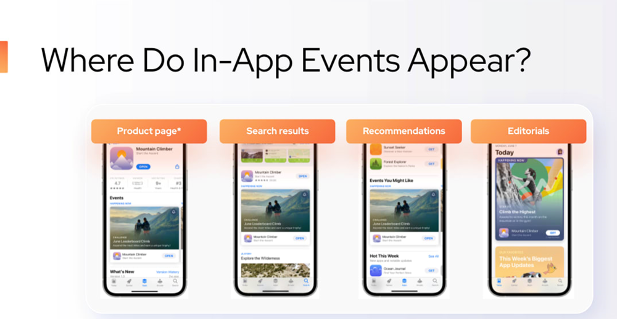

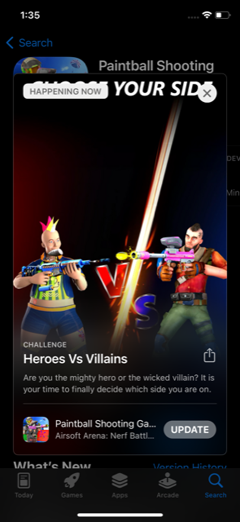
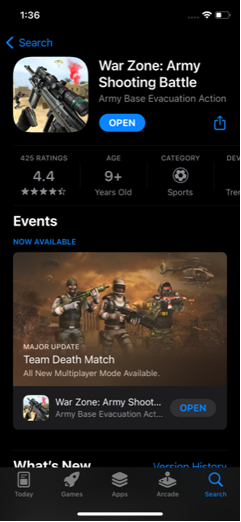

- Ratings
For both Apple and Google, Ratings work as a currency with which the App can buy an upper rank.
More the new ratings, higher the chances of the App being ranked. Any app with a good rating and from a lot of users have a chance of getting a higher rating and a chance for better conversion as well. So, the more and better the ratings, the higher your app stands.
A friendly reminder here and there in the game, to rate it, can have a very positive impact. Most important is where we place that friendly reminder and how we show it to the user. An intriguing text or the design might have a good effect.
Example of a rating’s card placement:

- Publishing Account Names
Now, this might come as a surprise for some, and others might put it in the black hat ASO list, but it is what it is I guess. If you are making an account on the App store or Google Play, you might need to consider the account’s name as an opportunity to utilize keywords. There have been many cases where the games have ranked on the account’s names, thus increasing the impressions it is getting.
Especially, the algorithm for the App store is seen picking up the keywords from the names of the publishing accounts.
Example of a fighting game ranking on its publishing account’s name:
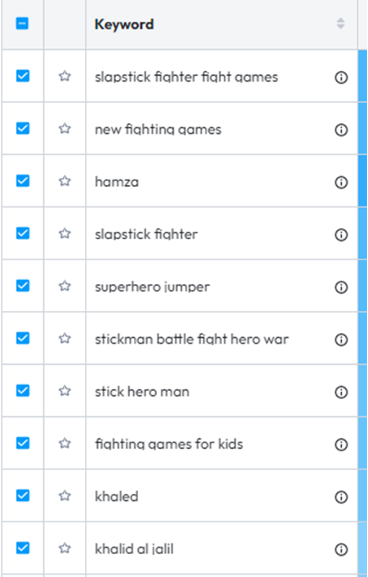
- Keywords Placement
Now we all know the basics, keep the most important keywords for the title, then the short description (in Google Play’s case) and the subtitle (in App store’s case). For the app store we put all the relevant and targeted words in the keyword’s field and for Google play we try and fit them into the description. What we know is how to put the keywords, but what we need to know is where to put these keywords.
For shorter pieces of metadata, like the name and subtitle, the algorithm reads from left to right, while for the lengthy description on Google Play, it reads from top to bottom. Then it gives each word it reads a weight, giving the words it reads first the most weight.
As a result, the keyword you’re aiming to target should appear as early as possible in the name of the app. The app’s subtitle, short description, and lengthy description all follow the same format.
Apple and Google consider it to be more pertinent to your app the closer it is to the start.
Conclusion
These are just the tips and tricks we have come across while experimenting with our games. ASO and algorithm is a continuously changing and evolving phenomenon, therefore, all we advise is to keep experimenting with the games you have, as different games and different genres perform differently to these kinds of strategies.
Join our newsletter
Volutpat vel turpis nulla lorem sed semper. Aliquam sagittis sem libero viverra vehicula nullam ut nisl.




